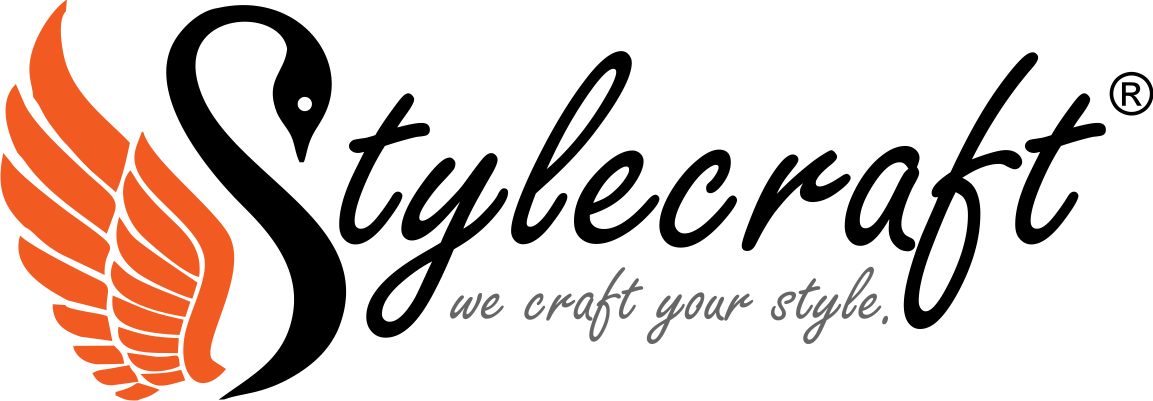Unveiling the Factors Behind the Price
Outline
- Introduction
- Definition of a Bean Bag
- Brief History of Bean Bags
- Importance and Popularity of Bean Bags
- Materials Used
- High-Quality Fabrics
- Premium Fillings
- Specialty Materials
- Design and Craftsmanship
- Innovative Designs
- Handmade vs. Machine-Made
- Brand Influence
- Comfort and Ergonomics
- Supportive Structure
- Health Benefits
- Customization Options
- Durability and Longevity
- Reinforced Seams
- Quality Zippers
- Fade-Resistant Colors
- Environmental Considerations
- Eco-Friendly Materials
- Sustainable Manufacturing Practices
- Recyclable Components
- Market Demand
- Trends in Home Decor
- Celebrity Endorsements
- Seasonal Fluctuations
- Production Costs
- Labor Costs
- Manufacturing Location
- Shipping and Logistics
- Branding and Marketing
- Advertising Expenses
- Brand Reputation
- Packaging Design
- Consumer Perception
- Perceived Value
- Reviews and Testimonials
- Social Media Influence
- Technological Advancements
- Smart Features
- Advanced Manufacturing Techniques
- Innovative Materials
- Case Studies
- Popular Brands
- Unique Designs
- Consumer Experiences
- Comparison with Alternatives
- Traditional Furniture
- Budget Bean Bags
- DIY Options
- Expert Insights
- Designer Opinions
- Industry Analysts
- Consumer Advocates
- Conclusion
- Summary of Key Points
- Future Trends in Bean Bags
- Final Thoughts
Introduction
Definition of a Bean Bag
A bean bag is a large fabric bag filled with small polystyrene beads, foam, or other materials that mold to the shape of the user’s body. This versatile piece of furniture offers comfort and a relaxed seating option, making it a popular choice in homes, offices, and recreational spaces.
Brief History of Bean Bags
The concept of the bean bag dates back to ancient times when people used natural materials like animal hides filled with dried beans or pebbles for seating. The modern bean bag as we know it was popularized in the 1960s and 1970s, becoming a symbol of casual, laid-back living.
Importance and Popularity of Bean Bags
Bean bags have remained popular due to their comfort, flexibility, and stylish designs. They are used in various settings, including living rooms, bedrooms, dorms, and even outdoor spaces. Their ability to conform to the body provides unmatched comfort, making them a favorite choice for many.
Materials Used
High-Quality Fabrics
Premium bean bags are often made from high-quality fabrics such as leather, suede, or heavy-duty polyester. These materials provide durability, a luxurious feel, and an aesthetic appeal that justifies the higher price tag.
Premium Fillings
The filling materials significantly impact the comfort and longevity of a bean bag. High-end bean bags use memory foam, microbeads, or shredded foam to offer better support and resilience compared to cheaper alternatives that use basic polystyrene beads.
Specialty Materials
Some bean bags incorporate specialty materials like water-resistant or UV-resistant fabrics, making them suitable for outdoor use. These materials add to the cost but enhance the bean bag’s functionality and versatility.
Design and Craftsmanship
Innovative Designs
Bean bags come in various shapes and sizes, from traditional round bags to more structured and ergonomic designs. Innovative designs that cater to specific needs, such as gaming or therapeutic use, often command higher prices.
Handmade vs. Machine-Made
Handmade bean bags, crafted with attention to detail and quality, tend to be more expensive than machine-made ones. The craftsmanship involved in hand-stitching and custom designs adds to the overall cost.
Brand Influence
Established brands with a reputation for quality and design often charge a premium for their products. The brand’s influence on pricing is significant, as consumers are willing to pay more for trusted names.
Comfort and Ergonomics
Supportive Structure
High-end bean bags are designed to provide optimal support and comfort. They often include features like adjustable fillings and ergonomic shapes that promote better posture and reduce strain on the body.
Health Benefits
Some bean bags are marketed for their health benefits, such as providing support for people with back pain or promoting better circulation. These features make them more appealing and justify a higher price point.
Customization Options
Customization options, such as choosing the fabric, color, and filling type, allow consumers to tailor the bean bag to their preferences. Custom-made bean bags are typically more expensive due to the bespoke nature of the product.
Durability and Longevity
Reinforced Seams
Quality bean bags are constructed with reinforced seams to prevent splitting and ensure durability. This attention to detail in construction contributes to the higher cost.
Quality Zippers
The use of heavy-duty, quality zippers that withstand frequent use adds to the bean bag’s durability and cost. Cheaper models often compromise on these details, leading to shorter product lifespans.
Fade-Resistant Colors
High-quality fabrics often come with fade-resistant properties, ensuring the bean bag retains its vibrant color over time. This added durability feature increases the product’s price.
Environmental Considerations
Eco-Friendly Materials
Eco-friendly materials, such as organic cotton or recycled fabrics, are more expensive to produce but appeal to environmentally conscious consumers. These materials reduce the environmental impact of manufacturing and disposal.
Sustainable Manufacturing Practices
Manufacturers that adopt sustainable practices, such as reducing waste and minimizing carbon footprints, often incur higher production costs. These practices contribute to the higher price of eco-friendly bean bags.
Recyclable Components
Bean bags made with recyclable components are more expensive but offer the benefit of reducing environmental waste. This sustainability factor is a selling point for many consumers willing to pay a premium for eco-friendly products.
Market Demand
Trends in Home Decor
Trends in home decor influence the demand and pricing of bean bags. When bean bags align with current trends, such as minimalist or bohemian styles, their popularity and price can increase.
Celebrity Endorsements
Celebrity endorsements can significantly impact the demand for certain bean bag brands, leading to higher prices. Consumers often associate celebrity-endorsed products with quality and style.
Seasonal Fluctuations
Seasonal demand, such as higher sales during back-to-school seasons or holidays, can affect pricing. Limited-edition designs or seasonal promotions also contribute to price variations.
Production Costs
Labor Costs
Labor costs play a significant role in the pricing of bean bags. Products made in countries with higher labor costs, or those requiring skilled craftsmanship, are more expensive.
Manufacturing Location
The location of manufacturing affects costs due to varying labor, material, and regulatory expenses. Bean bags produced in regions with stringent quality controls and higher operational costs are typically more expensive.
Shipping and Logistics
Shipping and logistics costs, including transportation, storage, and handling, add to the overall price of bean bags. Products that are bulkier or require special packaging incur higher shipping costs.
Branding and Marketing
Advertising Expenses
Significant advertising expenses, including online marketing, TV commercials, and social media campaigns, contribute to the higher cost of branded bean bags.
Brand Reputation
A strong brand reputation built over years through consistent quality and customer satisfaction allows companies to charge premium prices for their bean bags.
Packaging Design
Attractive and functional packaging that protects the product and enhances the unboxing experience adds to the overall cost. High-quality packaging is a part of the premium product appeal.
Consumer Perception
Perceived Value
The perceived value of a bean bag is influenced by its quality, design, brand, and features. Higher perceived value often translates to a willingness to pay more for the product.
Reviews and Testimonials
Positive reviews and testimonials from other consumers build trust and can justify higher prices. Brands with numerous favorable reviews often charge more due to their established reputation.
Social Media Influence
Social media influence, including endorsements from influencers and user-generated content, plays a significant role in shaping consumer perceptions and driving demand for more expensive bean bags.
Technological Advancements
Smart Features
Some high-end bean bags incorporate smart features, such as built-in speakers or heating elements. These technological advancements enhance the user experience and increase the product’s cost.
Advanced Manufacturing Techniques
The use of advanced manufacturing techniques, such as precision cutting and automated sewing, improves the quality and consistency of bean bags. These techniques can be more costly, contributing to higher prices.
Innovative Materials
Innovative materials, such as temperature-regulating fabrics or advanced foams, enhance the comfort and functionality of bean bags. These materials often come at a premium cost.
Case Studies
Popular Brands
Brands like Lovesac, Fatboy, and Yogibo offer high-end bean bags known for their quality, design, and comfort. These brands often serve as benchmarks for pricing in the market.
Unique Designs
Unique designs, such as bean bags shaped like animals or incorporating unconventional materials, highlight the creativity and innovation in the industry. These bespoke designs often carry a higher price.
Consumer Experiences
Real-life consumer experiences, including long-term use and satisfaction, provide insight into the value and durability of premium bean bags. Positive consumer experiences can justify the higher costs.
Comparison with Alternatives
Traditional Furniture
Comparing bean bags to traditional furniture like sofas and chairs reveals
the advantages in terms of flexibility, comfort, and cost. While bean bags can be more expensive, their unique benefits often justify the price.
Budget Bean Bags
Budget bean bags offer a more affordable alternative but often compromise on quality, comfort, and durability. The differences in materials and construction highlight the reasons for price disparities.
DIY Options
DIY bean bags can be a cost-effective solution but require time, effort, and skill. The quality and durability of DIY options may not match professionally made bean bags, explaining the higher prices of commercial products.
Expert Insights
Designer Opinions
Designers emphasize the importance of materials, craftsmanship, and ergonomics in creating high-quality bean bags. Their insights highlight the factors that contribute to the cost.
Industry Analysts
Industry analysts provide perspectives on market trends, consumer preferences, and pricing strategies. Their analysis helps explain the factors driving the higher costs of premium bean bags.
Consumer Advocates
Consumer advocates focus on the value proposition, ensuring that the higher cost of bean bags is justified by their quality, durability, and comfort. Their insights provide a balanced view of the pricing.
Conclusion
Summary of Key Points
Bean bags are expensive due to factors such as high-quality materials, innovative designs, craftsmanship, and brand reputation. Environmental considerations, market demand, and production costs also play significant roles.
Future Trends in Bean Bags
Future trends may include more eco-friendly materials, smart features, and innovative designs that enhance comfort and functionality. As consumer preferences evolve, so will the features and pricing of bean bags.
Final Thoughts
Understanding why bean bags are expensive helps consumers make informed decisions. Investing in a high-quality bean bag can offer long-term benefits in terms of comfort, durability, and style.
Internal and External Links:
- Internal: Bean Bag Maintenance Tips, Top Bean Bag Brands
- External: Sustainable Living Practices, Home Decor Trends


